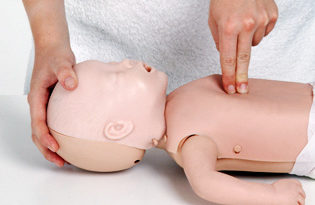
Steps To Lower Your Blood Pressure
![]()
Heart disease is the leading cause of death in both men and women. In fact, according to the American Heart Association, heart disease takes the lives of more than 375,000 Americans annually.
Read moreOur West Palm Beach campus is proud to announce that its Associate Degree in Nursing program has been granted initial accreditation from ACEN.

![]()
Heart disease is the leading cause of death in both men and women. In fact, according to the American Heart Association, heart disease takes the lives of more than 375,000 Americans annually.
Read more
![]()
When we think of CPR, we rarely think of how it all came to be. Here you will find information dating back to 1740 and the history of CPR.
Read more
![]()
As our world continues to advance technologically, it’s no surprise that there are apps available for download on your smartphone that have been designed to improve cardiac arrest survival rates.
Read more
![]()
Four out of five cardiac arrests occur at home, and failure to act in such an emergency can lead to death. The American Heart Association is looking to decrease the chances of death from cardiac arrest by implementing a program called the CPR in Schools Training Kit.
Read more
![]()
The American Heart Association’s Non-valvular Atrial Fibrillation Course is an eLearning course targeted for physicians, nurses, and pharmacists in Cardiology and Electrophysiology.
Read more
![]()
On June 8, 2015, Mike Brodzinski, a 16-year old from Pennsylvania, was in the middle of a recreation baseball game when he realized that the game’s umpire had collapsed. As a volunteer firefighter, Brodzinski took his training, and put it to use and helped save a life.
Read more
![]()
The American Heart Association offers Emergency Cardiac Care programs with the hope of increasing survival rates and the quality of life for victims of stroke and heart attack. Emergency Cardiac Care programs educate more than 12 million people every year by training healthcare providers, caregivers, and the general public on how to respond to these medical emergencies.
Read more
![]()
When it comes to Cardiopulmonary Resuscitation (CPR), it does differ between infants, children, and adults. Choking is the number one cause of unintentional death in infants. It’s important to be prepared on how to administer CPR to an infant in case you are ever in a situation that requires it. Below are the steps for CPR for an infant if he or she is not breathing.
Read more
![]()
With the continuous improvement and training of CPR and first aid techniques, the survival rate of those suffering from sudden cardiac arrest is increasing. Every five years, guidelines on how rescuers should perform first aid and basic life supporting techniques are reviewed and updated.
Read more
![]()
According to the 2010 American Heart Association Guidelines for Cardiopulmonary Resuscitation and Emergency Cardiovascular Care, there are 5 critical components of performing high quality cardiopulmonary resuscitation (CPR): minimize interruptions in chest compressions, provide compressions of adequate rate and depth, avoid leaning between compressions, and avoid excessive ventilation.
Read more